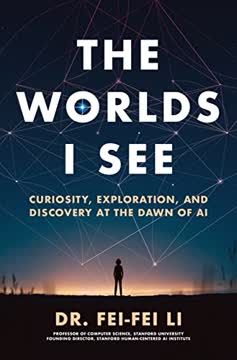つの重要なポイント
1. 顔認識技術の台頭:古代哲学から現代技術へ
「アリストテレスは、人間が真の顔を持つ唯一の生き物であると宣言した。」
古代のルーツ。 顔認識の概念は、アリストテレスが顔が人の魂や性格を反映すると信じていたことに遡る深い歴史的背景を持つ。この考えは、19世紀のフランシス・ゴルトンのような科学者たちによって、顔の特徴に基づいて人々を分類しようとする試みを通じて進化してきた。
現代の発展。 顔認識技術の現代的な時代は、1960年代にウッディ・ブレッドソーがCIAのために顔の照合プロセスを自動化しようとしたことから始まった。進展は遅かったが、1990年代にMITのマシュー・タークによる「アイゲンフェイス」アプローチが重要なブレークスルーをもたらした。この技術は2000年代初頭に勢いを増し、2001年のスーパーボウルでの「スヌーパー・ボウル」などのイベントが公衆の関心と懸念を高めた。
2. Clearview AI:顔検索を革新したスタートアップ
「それは、真相を探るための無謀な計画だった。連合の数人がタイラーをコメット・ピンポンに招待した—彼女が言うには、#PizzaGate陰謀論の中心にある不運なピザ屋だったから、ユーモラスに選ばれたのだ。」
物議を醸す起源。 Clearview AIは、2016年の米大統領選挙の政治的に緊張した雰囲気から生まれた。ホアン・トン=タット、リチャード・シュワルツ、そして当初はチャールズ・ジョンソンによって設立されたこの会社は、「スマートチェック」として始まり、政治的な審査のためのツールを作成することを目指していた。
技術的飛躍。 Clearview AIのブレークスルーは、ソーシャルメディアやインターネットから数十億の写真をスクレイピングし、高度な顔認識アルゴリズムと組み合わせることから生まれた。これにより、単一の写真からほぼ誰でも特定できるシステムを作成することが可能となり、以前の技術を大きく上回る精度と範囲を実現した。
- 主な特徴:
- 30億以上の顔のデータベース
- 部分的または低品質の画像から個人を特定する能力
- 世界中の法執行機関との統合
3. 倫理的ジレンマ:プライバシーの懸念と公共の安全
「COVIDの接触追跡の必要性を、Clearviewのような企業が影の監視ネットワークを構築するための口実として利用させてはならない。」
プライバシー擁護者の懸念。 顔認識技術の広範な使用は、重大なプライバシーの懸念を引き起こしている。批評家は、これが大規模な監視を可能にし、個人のプライバシーを侵害し、公共の場での匿名性が不可能になる社会をもたらす可能性があると主張している。
法執行機関の視点。 特に法執行機関の支持者は、顔認識が犯罪解決や公共の安全を高めるための強力なツールであると主張している。彼らは、この技術が犯罪者や行方不明者を特定するのに役立った事例を指摘している。
- 倫理的考慮事項:
- 同意:Clearviewのデータベースに含まれるほとんどの人々は、参加に同意していない
- データセキュリティ:個人情報の漏洩や悪用のリスク
- 自由な言論や集会への冷却効果
4. 技術的進化:AIが初期の制限を克服した方法
「タークは、ブラウン大学の研究者から、顔をデジタルで表現しつつ、コンピュータのメモリを最小限に抑える方法を借りた。」
初期の課題。 1960年代と1970年代の自動顔認識の初期の試みは、計算能力と手動入力の必要性によって制限されていた。これらのシステムは、照明、角度、表情の変化に苦しんでいた。
ブレークスルー技術。 2010年代にニューラルネットワークと深層学習の登場が顔認識を革命的に変えた。FacebookのDeepFaceやNEC、Clearview AIなどの企業による後の進展は、精度とスケーラビリティを劇的に向上させた。
- 主な技術的進展:
- 1990年代のアイゲンフェイスアプローチ
- 深層学習と畳み込みニューラルネットワーク
- 計算能力とデータの可用性の大幅な向上
5. 政府と企業の採用:監視が主流になる
「私たちが明らかにする事実は摩擦を引き起こす」と彼女は言った。「そして私たちの存在は、彼らが得られるマッチが少なくなることを意味する。」
政府の導入。 9/11の攻撃後、政府は安全目的での顔認識に対する関心が高まった。空港、国境管理、法執行機関は、しばしば公衆の監視がほとんどないまま、この技術を採用し始めた。
企業の利用。 民間企業も、スマートフォンのロック解除からターゲット広告まで、さまざまな目的で顔認識を取り入れている。Facebookのようなソーシャルメディアプラットフォームは、自動タグ付け機能を実装し、この技術をさらに一般化した。
- 広範な採用の例:
- 中国の広範な公共監視システム
- 米国の法執行機関によるClearview AIの使用
- 小売業における顔認識決済システム
6. バイアスと精度:顔認識の継続的な課題
「ACLUは、シチズンズ・ユナイテッド事件でエイブラムスと同じ側に立っていた。」
精度の懸念。 重要な改善があったにもかかわらず、顔認識システムは、特に多様な人口に対処する際に精度の課題に直面している。研究によれば、多くのシステムは女性や有色人種に対して精度が低いことが示されている。
バイアスの影響。 顔認識システムにおけるバイアスの可能性は、公平性や差別に関する深刻な懸念を引き起こし、特に法執行の文脈で問題となる。誤認逮捕の事例は、これらの問題を浮き彫りにしている。
- バイアスに寄与する要因:
- トレーニングデータにおける過小表現
- アルゴリズムの設計選択
- 照明や画像品質の違い
7. グローバルな視点:各国の顔監視へのアプローチ
「すべての社会は、自ら何を優先するかを決定する必要がある」と彼女は言った。「それが安全なのか、人権なのか。」
異なるアプローチ。 各国は、文化的、政治的、法的な文脈を反映した多様な顔認識技術へのアプローチを取っている。
- 中国:社会的コントロールと公共の安全のために広範な使用を受け入れる
- 欧州連合:プライバシー権を優先する厳格な規制
- 米国:州や地方の法律が異なる断片的なアプローチ
国際的な影響。 技術企業とデータの流れのグローバルな性質は、国境を越えた顔認識の規制に課題をもたらし、国際基準や合意の必要性が叫ばれている。
8. 法的闘争:顔認識技術を規制するための戦い
「裁判官は、ACLUがClearviewに対して法廷での権利を持つべきだと言った。Clearviewが他の訴訟で第一修正のカードを使おうとした試みも同様に却下された。」
画期的な事件。 顔認識技術に対する法的挑戦は増加しており、Clearview AIが多くの争いの中心にある。主要な問題には、プライバシー権、同意、公共データのスクレイピングの合法性が含まれる。
立法の努力。 一部の地域では、顔認識を規制または禁止する法律が制定されている一方で、他の地域では適切な措置についての議論が続いている。イリノイ州の生体情報プライバシー法(BIPA)は、法的挑戦を形作る上で特に影響力があった。
- 注目すべき法的措置:
- ACLUによるClearview AIへの訴訟
- Clearviewに対するEU規制当局の罰金と制限
- サンフランシスコの政府による顔認識使用禁止
9. 匿名性の未来:社会と個人の自由への影響
「私たちの顔は、プライバシーの最終的なフロンティアであるかもしれない。」
社会的影響。 顔認識技術の広範な採用は、公共空間や社会的相互作用の本質を根本的に変える脅威をもたらす。公共の場で匿名でいる能力は、長い間当然のこととされてきたが、過去のものになるかもしれない。
潜在的な結果。 匿名性の喪失は、個人の自由、政治的反対、社会的行動に広範な影響を及ぼす可能性がある。自己検閲を引き起こし、人々が公共生活に参加する方法を変えるかもしれない。
- 将来のシナリオの可能性:
- 公共空間における普遍的な顔認識
- 即時識別のための拡張現実との統合
- 新しい形のデジタルアイデンティティ管理とプライバシー保護
最終更新日:
FAQ
What's Your Face Belongs to Us about?
- Facial Recognition Focus: The book explores the rise of facial recognition technology, with a particular focus on Clearview AI, a startup known for its controversial facial recognition app.
- Privacy and Surveillance: It examines the implications of this technology on personal privacy, highlighting concerns about surveillance and potential abuses by individuals and governments.
- Historical and Real-World Context: The narrative provides a historical overview of facial recognition technology and includes real-life cases, such as wrongful arrests, to illustrate its societal impact.
Why should I read Your Face Belongs to Us?
- Timely and Relevant: As discussions around privacy and technology grow, this book offers critical insights into how facial recognition affects our lives today.
- In-Depth Research: Author Kashmir Hill combines investigative journalism with personal anecdotes, making complex technological concepts accessible and engaging.
- Ethical and Advocacy Focus: The book encourages readers to consider the ethical implications of technology and to advocate for better privacy protections.
What are the key takeaways of Your Face Belongs to Us?
- Surveillance State Reality: Facial recognition technology is becoming a tool for surveillance, potentially leading to a society where anonymity is impossible.
- Regulation and Awareness: There is a lack of comprehensive laws governing biometric data, leaving individuals vulnerable, and the book encourages public awareness of digital footprints.
- Ethical Considerations: The narrative raises important questions about the balance between security and privacy in a digital age.
What are the best quotes from Your Face Belongs to Us and what do they mean?
- “Privacy, a word that is notoriously hard to define…”: This quote highlights the evolving nature of privacy in the digital age.
- “The future is unevenly distributed”: It underscores the disparity in access to technology and its implications, suggesting that advancements benefit some while disadvantaging others.
- “You can’t ban technology”: This reflects the inevitability of technological progress and the challenges of regulating it, emphasizing the need for ethical considerations.
What is Clearview AI, as discussed in Your Face Belongs to Us?
- Facial Recognition Startup: Clearview AI is a company that developed a facial recognition app capable of identifying individuals from photos scraped from the internet.
- Law Enforcement Tool: The technology is marketed primarily to law enforcement agencies, raising ethical concerns about privacy and surveillance.
- Controversial Practices: The company operates in a secretive manner, often avoiding public scrutiny while facing backlash for its data collection methods.
How does Your Face Belongs to Us address the historical context of facial recognition technology?
- Early Development: The book traces the origins of facial recognition technology back to the 1960s, detailing initial challenges and failures.
- Technological Evolution: It highlights key milestones and advancements in the technology, including growing interest from law enforcement and private companies.
- Cultural Shifts: The narrative discusses changing societal attitudes towards privacy and surveillance, influencing the acceptance of facial recognition technology.
What are the ethical implications of facial recognition technology discussed in Your Face Belongs to Us?
- Potential for Abuse: The book raises concerns about misuse for harassment, stalking, and discrimination, especially against marginalized groups.
- Consent and Ownership: It emphasizes the lack of consent in using individuals' images in databases, questioning data ownership and rights.
- Surveillance and Control: The narrative warns of a future with constant surveillance, leading to a loss of personal freedoms and autonomy.
How does Your Face Belongs to Us illustrate the impact of technology on privacy?
- Real-World Examples: The author provides case studies and anecdotes demonstrating current uses of facial recognition in various contexts.
- Public Reaction: The book discusses mixed public responses to surveillance technologies, highlighting both fascination and fear.
- Call to Action: Hill encourages discussions about privacy rights and advocates for stronger regulations to protect against invasive technologies.
What challenges does Clearview AI face, according to Your Face Belongs to Us?
- Legal Scrutiny: The company is under threat of lawsuits and regulatory challenges due to its controversial data collection practices.
- Public Backlash: Clearview AI faces criticism from privacy advocates and civil rights organizations, impacting its reputation and operations.
- Competition and Innovation: As larger tech companies develop their own technologies, Clearview AI must innovate while navigating ethical concerns.
How does Your Face Belongs to Us address the balance between security and privacy?
- Security vs. Civil Liberties: The book explores the tension between security desires and the need to protect privacy rights, especially with surveillance technologies.
- Public Sentiment: It discusses how public opinion often favors security measures, sometimes at the expense of privacy, and the need for informed debate.
- Regulatory Advocacy: The author calls for a balanced approach prioritizing both security and privacy, emphasizing the importance of regulations.
What role do tech companies play in the proliferation of facial recognition technology, according to Your Face Belongs to Us?
- Market Demand: The demand for advanced surveillance tools has led tech companies to develop and market facial recognition technology.
- Corporate Responsibility: The book discusses the responsibility of tech companies to ensure ethical use and to advocate for privacy-protecting regulations.
- Potential for Abuse: Without proper oversight, facial recognition technology can be misused by private companies and governments, leading to surveillance and loss of liberties.
What future developments in facial recognition technology are suggested in Your Face Belongs to Us?
- Increased Integration: The book suggests facial recognition will become more integrated into everyday life, from security systems to social media.
- Regulatory Changes: It anticipates a push for stricter regulations as public awareness grows.
- Ethical Considerations: The narrative emphasizes ongoing discussions about ethical implications and the balance between innovation and privacy.
レビュー
本書『あなたの顔は私たちのもの』は、顔認識技術とClearview AIに関する調査報道が高く評価されている。読者は、プライバシーに関する懸念についての情報が豊富で、文章が優れており、目を開かせる内容であると感じている。多くの人々は、歴史的背景や倫理的議論を評価しているが、一部の読者は政治的偏向を批判し、より技術的な詳細や解決策を求めている。この本は魅力的でありながら恐ろしい側面も持ち合わせており、読者にプライバシーと監視の未来について考えさせる。全体として、その関連性と考えさせられる内容から非常に推奨されている。
Similar Books













